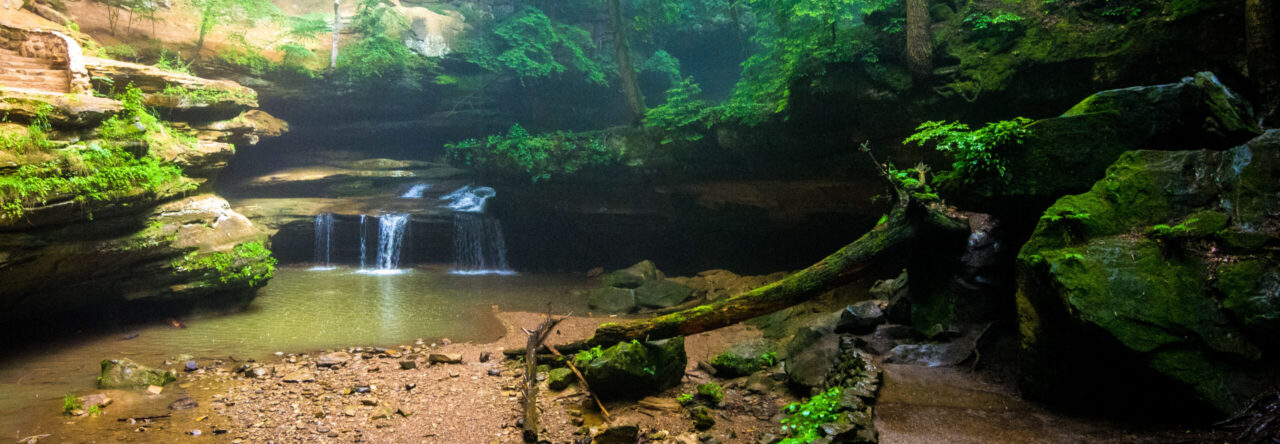Located just south of San Antonio, Texas, San Antonio Missions National Historic Park is made up of four Spanish missions built beginning in the mid 18th century to spread Christianity to the Native people of Texas. These missions are walled compounds featuring a beautiful, old, Catholic church and buildings where the priests and Native Americans lived. Altogether, the missions are the largest collection of Spanish Colonial architecture in the United States and are the only UNESCO World Heritage Sites in Texas.
The missions only stretch eight miles from the city and can be accessed by River Walk’s Mission Reach, a hiking and biking trail that allows you to visit the missions without needing a vehicle. If you’re not that athletic, there are bus tours of the missions as well as a self-guided driving tour. The missions are open daily and are free to visit.
We began exploring the missions at Mission San Jose (below) which is home to the park visitor center. When we visited at the end of December, the visitor center was closed but there were rangers stations at the door with maps and to answer questions about the park. They were also stamping the National Park passport for you.
Mission San José was founded in 1720 because Mission San Antonio de Valero (AKA The Alamo) had quickly become overcrowded with refugees when the East Texas Missions were closed. The building was built in 1768 from local limestone and still stands today. Of the four missions located within the park, this one is the biggest and most ornate. If you only have time to visit one of the missions, this is the one to see. It has the biggest grounds and you can see where the priests and the native people lived.
The second Mission on our mission tour was Mission San Juan (top). Mission San Juan Capistrano was originally built in 1716 in East Texas and was moved to San Antonio in 1731. Not to be confused with Mission San Juan Capistrano in California, the white exterior makes this mission different from the others on this tour. In 2012, a $2 million renovation project stabilized the foundation of the 300-year-old church.
Our third mission of the day was Mission Espada. Espada was originally built in 1690 near present-day Augusta and named San Francisco de los Tejas. Just like Mission San Juan, Espada was moved to its current location on Espada road and was given its current name in 1731. Many modern churches in the area based their architecture around Espada including St. Stephen’s Episcopal Church in Wimberley, Texas. Nearby, the Espada acequia and aqueduct are also managed by the Park Service and continue to bring water to the missions as well as nearby residents.
Located closest to the city, Mission Concepción was our fourth stop on our Mission tour. Misión Nuestra Señora de la Purísima Concepción de Acuña was founded in 1716 in East Texas and was moved to its current location in 1731. In 1835, the Battle of Concepción was fought on the grounds and is believed to be the first battle in the Texas Revolution. In 2009-2010 the mission underwent extensive restoration projects and is now the best-preserved of the missions.
If you are planning to visit the missions, bear in mind that these churches are still in operation and hold masses on Sunday mornings. When we visited, we were not able to go inside Mission San Jose because there was a funeral. Luckily, it was on the way back to San Antonio and by the time we were on our way back to the city, the building was open again and we were able to see the beautiful interior of the sanctuary. For more information about the missions, visit VisitSanAntonio.com or the National Park Service.
Of course, there is one more mission in San Antonio, Mission San Antonio de Valero, more commonly known as The Alamo, I will share about final stop on our Mission Tour next week. To read more about this trip, visit the Texas Hill Country Road Trip Report. To read about some of our previous trips, click here. If you like my photos be sure to “like” my Facebook Page and follow me on Instagram! You can purchase prints on Etsy and Fine Art America. To see inside my camera bag, check out my updated Gear Page.
Pin This:





Leave a Reply